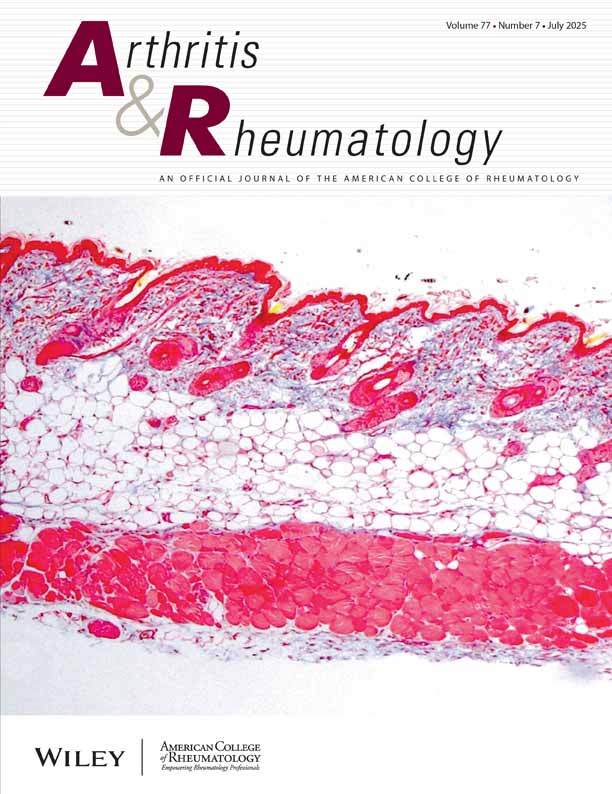Impaired salivary gland function in NOD mice: Association with changes in cytokine profile but not with histopathologic changes in the salivary gland
Abstract
Objective
To characterize the chronologic disease course and possible interrelationships between salivary gland inflammation, hyposalivation, and cytokine levels in NOD mice, a model for Sjögren's syndrome (SS).
Methods
NOD mice of different ages were used to mimic different disease stages of SS. Histopathologic findings and rates of salivary secretion were compared between 8-week-old, 17-week-old, and 24-week-old female mice. In addition, 10 cytokines were analyzed in serum and saliva obtained from NOD and BALB/c mice.
Results
In NOD mice, the salivary flow rate did not change between 8 weeks and 17 weeks of age, while a significant decrease in the salivary flow rate occurred between 17 weeks and 24 weeks of age (P < 0.001). In contrast, significant histopathologic changes in the salivary glands occurred before 17 weeks of age. Chronic inflammatory cell infiltrates were characterized by T and B cell infiltration. Interestingly, in one-third of the mice, proliferating cells were observed in the focal infiltrates. Significant changes in the levels of interleukin-2 (IL-2), IL-5, and granulocyte–macrophage colony-stimulating factor in serum, and in the levels of IL-4 and tumor necrosis factor α (TNFα) in saliva occurred contemporarily with the decrease in salivary flow. Correlation analyses revealed a negative association between salivary secretion and the levels of IL-4, interferon-γ, and TNFα in saliva obtained from NOD mice, while the correlation with inflammatory changes in the glands was consistently weak.
Conclusion
Consistent with previous findings, our results indicate at least 2 phases of SS-like disease in NOD mice. Hyposalivation was preceded by inflammatory changes in the salivary glands, whereas abrupt changes in secretion occurred without significant progression of inflammation. Changes in cytokine levels are an indication of the mechanisms involved in the adaptive immune response in the transition from early to overt disease.




